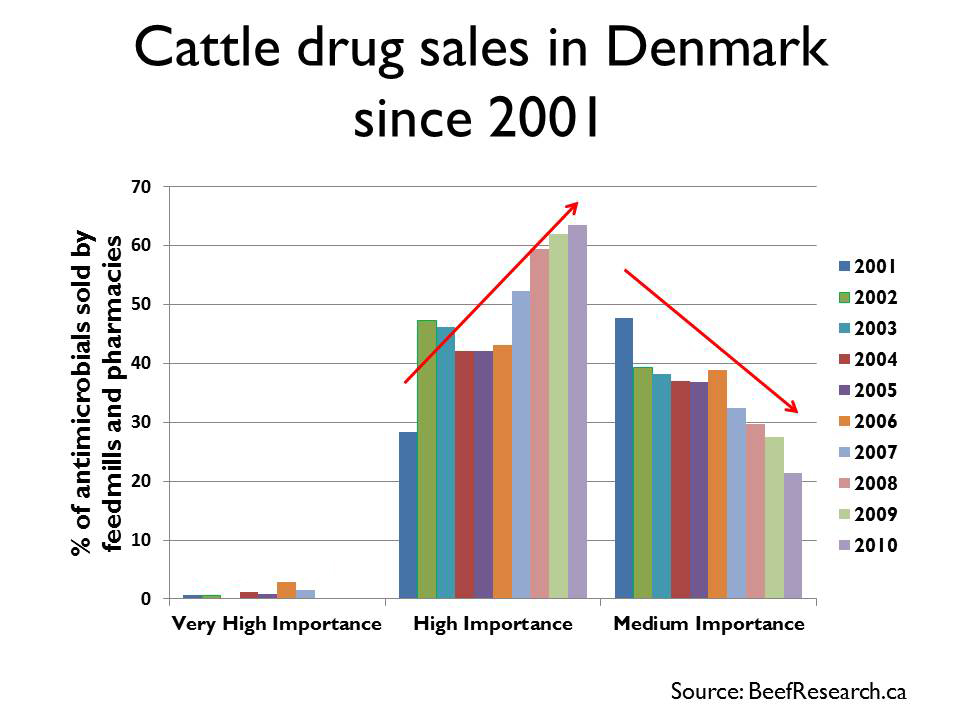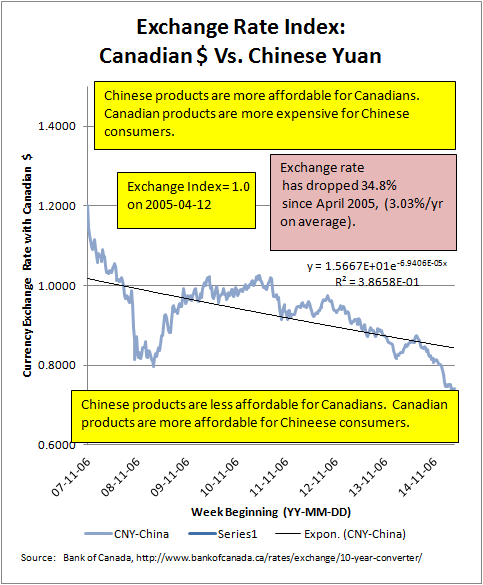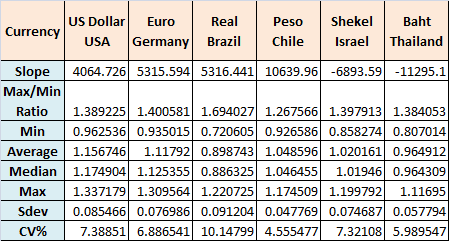Nope.
Small Flockers has done 24 well researched postings on this deadly problems during the last 26 months (see here, here, here, here, here, here, here, here, here, here, here, here, here, here, here, here, here, here, here, here, here, and here). However, Small Flockers were latecomers to this lonely party.
Canadian Press contacted Dr. John Prescott, a veterinarian who retired last year from the Ontario Veterinary College in Guelph, Ont.
Dr. Prescott was on a Health Canada committee that recommended 13 years ago to end regulatory loopholes that:
- allowed any Canadian (including farmers) to import foreign drugs that aren't approved for use in Canada, provided those imported drugs are only used for "personal use" (ie. not re-sold to others).
- allowed farmers to prescribe, medicate and treat farm animals (even for animals that are destined to be sold, slaughtered, and become food for the general public) without the oversight of a veterinarian.
Norway, Denmark, the Netherlands, Sweden, Britain, and others have recently tightened up the use of antimicrobials on farms. Today they only allow antibiotics to be used on farms when prescribed by a veterinarian.
Just how big is the problem, and where is it the worst?
 |
| Figure 1: Antimicrobial Use in Canada, as of 2009 |
Figure 1 at the right shows data presented by Canadian Beef Farmer. Perhaps the data has been massaged to present their friendly beef farmers in the best light possible.
Note that feedlot cattle predominately use Class 4 antimicrobials, ones that have a low importance to treating humans. Note that dairy cattle and non-feedlot beef are not presented here separately, they are lumped into "All Animals" category. There is some use of Category 3 antimicrobials, but less than 10% of the total. There are even Class 1 and 2 drugs used, but miniscule in comparison.
There is no mention of tonnages of animal feed, just percentages of the antimicrobial classes used. Dairy and beef cattle eat huge volumes of feed, more than all other animals combined. Therefore I'd reserve my opinion on this factoid until I see the same data in kg/year, not percentages.
Note that CAFO (Concentated Animal Feeding Operations), chicken factories with 200,000 birds or more) are likely one of the biggest offenders in the excessive and questionable use of antimicrobials.
Mother Jones reports 74 percent of the medically important drugs being consumed on farms are delivered through feed, and another 24 percent go out in water. That means fully 95 percent is being fed to animals on a regular basis, not being given to specific animals to treat a particular infection.
When a specific animal is unwell, it would be treated individually, not wholesale treatment by putting the drug in the central feed and/or water system that supplies the whole flock. Note that just 4 percent of drugs used are administered via injection, 1 percent orally; indicating the flock is OK, but an individual bird is sick. We therefore conclude that 95% of the antimicrobials used are administered to the entire flock. This 95% use would indicate the dirty habit of using antimicrobials as either a growth promotant, or as a propholactic crutch to help the animals survive the terrible living conditions in a CAFO.
The All Animal category uses significant amounts of all antimicrobials in all 4 classes. This is obviously an area for improvement.
Note that the Human (retail pharmacies) graph likely excludes hospitals, Long Term Care Facilities (ie. Nursing Homes), clinics, etc.
Will the Auditor General's report help Health Canada suddenly pass the necessary regulations? Will the regulations ensure a more prudent use of antimicrobials?
Natural Resources Defense Council's Avinash Kar, said 70 percent of medically important antibiotics sold in the US go to farms. In the US, the FDA, alerted by the Ceftiofur Incident in Quebec (see Finally! CFC Bans Ceftiofur Injections in Eggs & Chicks ) has already asked for a voluntary cutback on the use of antimicrobials on farm animals. In spite of this formal, yet voluntary request to do what is right, Mother Jones reports the growth in antimicrobial use has continued. Between 2009 and 2013, the use of medically important drugs on US farms grew by 20 percent.
 |
| Figure 2: Antimicrobial drug sales in Denmark since 2001. Denmark phased out antimicrobial use between 1994 to 1999 |
It isn't just the US. It's a world-wide problem. Figure 2 shows the antimicrobial drug sales in Denmark for cattle farms since 2001. Denmark phased out antimicrobial use between 1994 to 1999, so this graph should show the new, improved methods after the antimicrobial controls are fully implemented, similar to what Health Canada is proposing.
On Denmark's antimicrobial leadership experience, Beef Research says:
"Since 2001, there has been a clear trend of increased use of prescribed veterinary antimicrobials. There has been a drop in the [farm] use of Medium Importance antimicrobials that are rarely used in humans anymore. However, the use of High Importance antimicrobials [on farms] has increased. Without the use of growth promoting antimicrobials, the need [on farms] for antimicrobials that are important to human health increased. In addition, there has been no clear trend towards decreased antimicrobial resistance [of bacteria] in Danish cattle or beef."
Lesson Learned: Once the antimicrobial genie is out of the bottle, it's hard to put the genie back in the bottle.
If a CAFO farmer has a million dollars invested in his CAFO livestock, and the government takes away the antimicrobials that allows the CAFO animals to survive the poor living conditions on your CAFO farm, what are you going to do?
Small flock methods such as pastured poultry generally don't need antimicrobials, but CAFO's do. Currently, CAFO's must have antimicrobials to allow the animals to survive the poor living conditions in the CAFO, thereby minimizing the risks to their huge CAFO profits. Without continuing the administration of antimicrobials, corporate profits and thousands of CAFO jobs could be put at risk. If you can somehow use antimicrobials, you can continue your crazy CAFO ways, and obtain the huge CAFO profits. CAFO operators see that as an easy choice, and therefore refuse to consider pastured poultry as a viable alternative.
It seems obvious that the CAFO farmer will call up the local Veterinarian, and tell the Vet his concerns. The Vet has likely been dealing with that CAFO farmer for a long time, selling the Vet's professional services to the CAFO farmer, and wants to continue to do so. Eventually, the Vet writes a prescription for the CAFO farmer. The CAFO farmer uses that prescription to purchase the antimicrobials he wants to continue feeding his CAFO animals. The CAFO farmer continues doing what he always did before, without missing a beat. The only difference is, the CAFO farmer has a slightly different paper path through the bureaucracy.
The only thing that will stop this scenario from occurring is a Vet with a backbone. The Vet will have to risk sacrificing himself and his personal profits for the greater good of the public.
If a Vet has a personal friendship and decades of income from one or more CAFO farmers, can the Vet resist the temptation to give the CAFO farmers what they want? If this Vet doesn't give these CAFO farmers what they want, the CAFO farmers will likely go shop their need around to other Vets, eventually finding a Vet who will give those CAFO farmers what they want.
Some Vets are full-time employees of Big Ag. or Big Food producers who raise millions of animals for profit. If the Vet's bosses order the Vet to issue a prescription for the millions of animals raised by the corporation, will the Vet risk his job and regular pay cheque by saying:
NO!
Frankly, I'm not sure what I would do under those circumstances. Thirty years ago, in a similar circumstance to this tough choice facing the Vets of today, I raised an issue as a Professional Engineer with the corporation that employed me. At that time, I and most of the peers in the industry recognized my corporation as an excellent corporate citizen who generally did what was right, just, & proper. Eventually, I was able to get the corporation to reverse course and do what was morally & professionally correct at an additional cost of about $50,000 to the corporation, but that stand I took eventually cost me my job. A Vet standing tall today could force a decision that risks millions of dollars and thousands of jobs for their corporation; orders of magnitude greater forces at play than in my circumstances 30 years ago.
What would you do?
Currently there is no system to publically "Name & Blame" Vets who cave in to these CAFO pressures. In a dark, secret world of non-disclosure, Vets are unlikely to be blamed and disciplined by their peers. If all Vets are mandated to publically disclose the kg and percentages of prescriptions they write for the 4 Classes of microbials every Quarter, some or most Vets will comply and stand tall. Even then, some Vets may cheat for personal profit, or rebell against this bureaucratic intrusion into their professional discretion and freedom. Rigorous auditing of all Vets will have to be done to ensure that the numbers publically reported by each Vet are true.
Is Health Canada and all the Vet Colleges of Canada prepared to go there? If not, then we can expect many Vets to cave to the CAFO pressures that will eventually occur under the proposed tightening of Health Canada regulations.
In Denmark, that is likely why the use of "High Importance" drugs is rapidly increasing, and the Medium Importance antimicrobials are on the decline (the ones the CAFO farmer had previously been using on his own). Obviously, the regulatory actions of the Danish government did not achieve the intended improvement.
If Health Canada passes knee-jerk, naieve, or superficial regulations, those regulations likely won't work here either. It appears that this is what Health Canada intends to do.
By the time we get serious about the improper use of antimicrobials, it may be too late to save millions of additional Canadians who will become infected by Superbugs.












